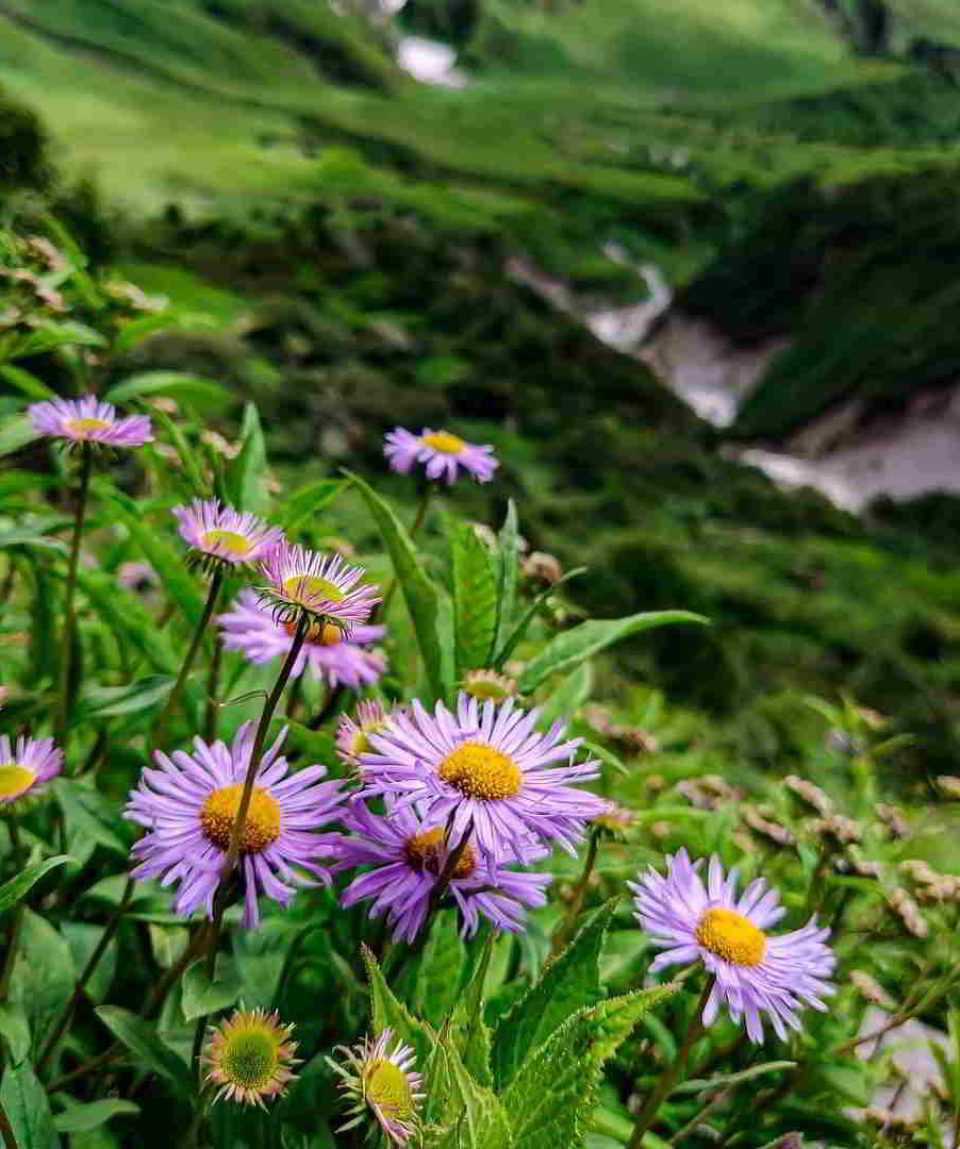Valley of Flowers Trek
fromThe best season to visit the Valley of Flowers Trek is July to September
-
Reviews 0 Reviews0/5
-
Vacation Style Holiday Type
-
Activity Level Fairly Easy
-
The Valley of Flowers, is an Indian National Park and a UNESCO World Heritage Site. Tucked away neatly in the Bhyundar Valley of Chamoli District lies of exotic and various species of alpine flowers, vegetation and medicinal plants, rare animals and birds that we don’t usually get to see. It is a part of the famous Nanda Devi Biosphere Reserve. The best time to visit the valley is between July to September. This is when one can see the maximum variety of fully bloomed flowers and their gorgeous colours. It is said that the colour of the valley changes with each season according to the colours of the flowers.
Every year many people from various parts of the world come to visit the valley in full bloom. The rich diversity and the beauty of the place makes it extremely popular amongst trekkers. The Valley of Flowers trek starts from Ghangaria base camp and the trek route to the Valley is a mix of steep climbs and gradual slopes making it easy to moderately difficult. And because of this, a number of beginners and first-time trekkers feel confident of undertaking the trek. The Valley of Flowers in Uttarakhand is also near Hemkund Sahib which allows trekkers to include this point in their itinerary as well. The Hemkund Sahib is the world’s highest Gurudwara and the frozen blue-green Hemkund Lake is another jewel of nature.
- Accommodation on a double/triple sharing basis: hotel/guest house at Joshimath (1st and 5th nights only)
- Meals on trek: Breakfast, lunch, beverages (hot), snacks, soup and dinner (Day 1 Dinner to Day 6 Breakfast)
- Trek necessities and equipments: sleeping bag, comfortable tents, crampons and gaiters
- All permits and entrance fees
- First aid medical kits and oxygen cylinder
- Experienced and qualified professional trek guide and support staff
- Pickup and drop: to and from Haridwar Railway Station
- Breakfast and lunch on the first day
- Lunch on the last day
- Personal insurance
- Individual toiletries and medicine kits
- Any expenses borne by trekker on their own
- Train or Flight tickets charges
- 5% GST
- Anything not mentioned in Inclusions
The Valley of Flowers National Park is located in the state of Uttarakhand in North Chamoli and Pithoragarh. It is protected by UNESCO and enjoys the status of a World Heritage Site.
The Valley of Flowers, Uttarakhand, is a national park resting in the interior Garhwal Himalayas that is known for its diverse abundance of flora and fauna. It is home to rare endangered animals like the Snow Leopard, Asiatic Black Bear, Blue Sheep, and more. It also houses many cherished flowers like the Blue Poppy and Cobra Lily and also many varieties of orchids, geraniums, primulas, marigold, and daisies. One can also see birch and rhododendron trees in the sub-alpines of the valley. This picturesque vibrant meadow attracts visitors from every corner of the world.
The Valley of Flowers nurtures close to 550 species of endemic flowers and medicinal plants species like pteridophytes, angiosperms, and gymnosperms that are a specialty of high altitude vegetation. 500 species out of these 550 are exclusively flowering plants.
The best time for the Valley of Flowers Trek is undoubtedly during the monsoon months of July to September. August is popularly considered to be the best month to visit this enchanting meadow.
Most people undertake this trek in the monsoon months of July or August, so sudden rainfall can be expected. The average temperature varies from 16 to 18 degree Celsius. The mist and low hanging clouds over the horizon and the lush rain-washed flowers creates an unbelievable magical beauty.
Absolutely. The Hemkund Sahib Valley of Flowers is the favourite trek route of trekkers journeying to the Valley of Flowers. It is a must-visit destination for all. This trek is taken on the 4th day of the itinerary. The Gurudwara Hemkund Sahib is one of the most revered and beloved Sikh Shrines.
From Delhi you can easily board a direct bus or train to Haridwar. Alternatively, you can take a flight to Dehradun and drive to Haridwar from there. From Haridwar you need to again drive to Govindghat and a further 4 kms to Pulna in a separate vehicle. From Pulna you’ll need to trek about 9 to 10 kms to reach the Valley of Flowers.
Auli to Valley of flowers distance is 49 kms . The Valley of Flowers is not directly connected by roads, so you have to reach Govindghat at first which is at a distance of 31kms from Auli and takes about an hour. Trek to the Valley of Flowers from Govindghat campsite for 28kms. It is ideally covered in 2 days.
The Valley of Flowers trek is a relatively easy to moderate one. There’s some steep
ascent when beginning from Ghangaria which gradually becomes easy till you reach the Valley of Flowers. It takes around 5 days to finish the trek from Haridwar.
Absolutely! The route is such that it can be easily trekked by a first-timer with basic fitness levels. Although there’s an uphill climb for the first 3 km you can easily trek through those trails. Ponies and helicopters can also be availed. Ensure a minimum fitness level before embarking on the trek.
It is a four day long journey beginning at Govindghat base, followed by a 14kms trek to Ghangaria within 8-10hrs. From Ghangaria campsite it’s a 10kms trek back and forth to the Valley of Flowers
Although the Valley of Flowers trek is touted to be easy to moderate, it’s best to prepare yourself in advance. Focus on cardio exercises for at least 1 hour/day and practice climbing stairs. Add some breathing exercises to help regulate your breathing while trekking at high altitudes. Also focus on strengthening your leg muscles.
Consumption of alcohol or other types of intoxicants during the Valley of Flowers trek is
strictly prohibited as alcohol can be dangerous at high altitudes.
Being a strictly Himalayan trek, you should absolutely wear waterproof trekking shoes only and not sports or normal walking shoes on the Valley of Flowers, Uttarakhand, trek. Make sure your shoes are waterproof and have a high ankle and grip. Do carry a minimum of 4 pairs of cotton socks.
Mobile reception will be available till Haridwar, and at times till Joshimath but not beyond that. So you’ll get the much needed digital detox and be able to enjoy the ethereal beauty of the valley whole-heartedly.

